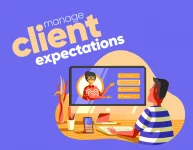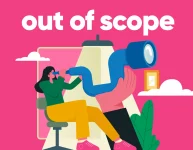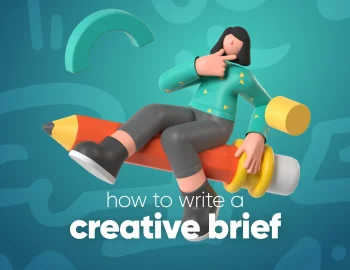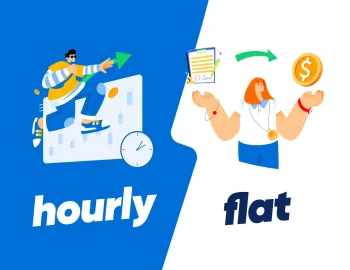You know that feeling when a client email pops up, and you just know it’s going to ruin your perfectly planned timeline? Maybe they want “just one small tweak” (which is actually a full-on redesign), or they suddenly go missing when you need approval yesterday. Yeah, we’ve all been there.
Effective communication with clients is not simply a term we throw around wanting to sound professional, it’s the glue that holds projects together. It’s about building trust, setting the right expectations (and boundaries), guiding the talk in the desired outcome way, and ensuring understanding, alignment, and the foundation for a productive, long-term relationship.
And while some are natural when it comes to the art of communication, others need to spend some time mastering the skill of gracefully dealing with clients. That’s why today we’ll go through 15 tips that can help anyone who wants to communicate effectively with clients, have productive and meaningful conversations, and, as daring as it sounds, enjoy the process.
1. Choose your communication channels
Some clients love email, others prefer quick Slack messages, and a few might insist on old-school phone calls. Instead of bouncing between a dozen platforms, set clear communication channels from the start.
A simple, “Hey, do you prefer updates via email or a shared workspace?” can save everyone a ton of frustration. The key is consistency – clients shouldn’t have to dig through three apps just to find your last message.
And while flexibility is great, don’t let communication scatter across too many platforms. The more centralized things are, the smoother everything flows.
2. Respond on time. Every time
Speed matters more than you think. Even before a client reads your actual response, your response time has already shaped their impression of you. Clients want to feel valued. The more responsive you are, the more trust you build. And trust leads to long-term happy clients (who bring more clients with them).
When a potential client reaches out, they’re likely exploring multiple options. And in the time you’re crafting the “perfect” reply, another agency has already made contact, got their attention, and won them over, leading only to missed opportunities. Harsh? Maybe. True? Absolutely. A fast reply doesn’t just answer their question – it shows you’re engaged, reliable, and on top of things.
Even after landing the project, the rule still applies. Staying responsive is key. A quick acknowledgment, like “Got your message! I’ll get back to you by [time].”, keeps the client informed and reassured and prevents them from wondering if you’ve disappeared. No one likes being left on “read.”
3. Listen first, talk later
Ever had a conversation where someone just waits for their turn to speak instead of actually listening? Don’t be that person. When explaining their needs, give your clients time and space to do so – fully (even when they don’t even quite know what they want yet). You’d be surprised how much valuable insight comes from just letting them talk.
Active listening isn’t just about hearing words – it’s about understanding clients and picking up on what they really want. Nod (virtually or in person), ask clarifying questions, and make them feel heard. The more you tune in, the better you’ll understand the goals, challenges, and unspoken client expectations, and the more you prevent misalignment, scope creep, and endless revisions later.
When clients feel like you get them, they’re more likely to trust your expertise and feel that you’re on their side, not just another service provider. And that’s half the battle.
4. Get personal
Ever noticed how hearing your own name makes you perk up? That’s because names create connections. So, instead of starting every email with a generic greeting use the client’s actual name.
And when things get personal (whether it’s admitting a mistake or clarifying something tricky) use “I” instead of “we.” Saying “I’ll take care of this for you” wears that personal touch that makes it feel so promising.
It’s a small tweak, but it builds connections with clients and makes your communication style feel less robotic. And in a world of auto-generated responses, a little human touch goes a long way.
5. Speak their language, not yours
You might know every technical term in your field, but guess what? Your client probably doesn’t. And drowning clients in industry jargon doesn’t make you look smarter – it just makes the communication process harder.
The key to effective client communication is keeping things clear and accessible. Ditch the unnecessary jargon. Spell out acronyms. Explain complex ideas in plain, relatable terms. Your client doesn’t need a crash course in your field – they just need to understand enough to make smart decisions.
And if technical details do matter, pair them with analogies, examples, or visuals to bridge the gap. Clarity wins every time. When a client understands exactly what’s happening, they feel confident in their decisions – and you.
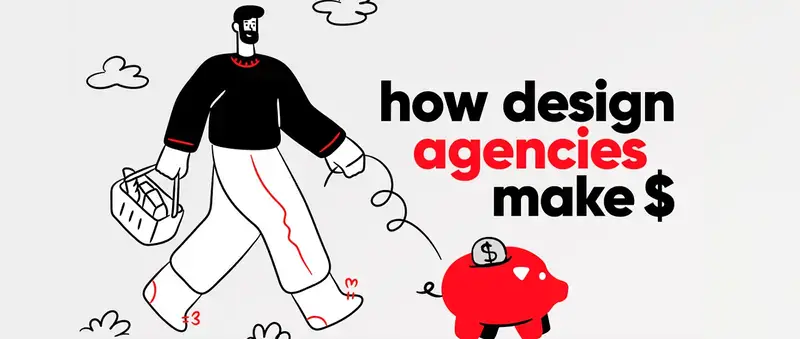
6. Say it right – because words matter
Good communication isn’t just about what you say to clients. How you frame your words shapes how they’re received. Beyond using proper grammar (which should be a given), think about tone, sentence structure, and clarity.
Besides grammar, psychology plays a big role in how your words are perceived. Clients respond better to positive language so try and focus on what can be done rather than what’s not possible. Be mindful of how often you use “you,” which can sometimes sound accusatory. Instead, lean on “we” to reinforce teamwork and “I” when owning up to mistakes.
Also, match your client’s tone. Some prefer a formal approach, while others are happy with a more casual conversation. When in doubt, start with a bit more polished, professional tone and let them set it further. Small shifts in language can make a huge difference in how smooth your client interactions are.
7. Ask. Clarify. Repeat
Want to know the fastest way to derail a project? Make assumptions.
Clients think they’re being clear, but sometimes they don’t have the right words to express exactly what they need. If you just guess based on their first request, you might end up going full speed in the wrong direction – wasting hours, effort, and everyone’s patience.
The fix? Ask questions. Lots of them. Dig deeper than their initial request. If they say, “I want a modern website,” ask what modern means to them. The more details you gather, the smoother the project will go.
Not only will this save you from unnecessary headaches, but it also shows that you genuinely care about getting things right. And if something still feels unclear? Ask again. Over-communicating is always better than cleaning up a mess later.
8. A client portal = less chaos, more clarity
Ever had a client email you for the fifth time asking for a file you know you already sent? If you strive for effective client communication enter the magic of a client portal.
A centralized hub (whether it’s Google Drive or an actual client portal and project management software tool like Kitchen.co) ensures everyone is on the same page keeping everything in one place: project updates, documents, deadlines, and feedback. No more lost emails, forgotten attachments, or “Can you resend that?” moments.
Plus, clients love knowing where to check for progress without feeling like they have to chase you down. And you? You get fewer redundant messages cluttering your inbox. Win-win.
9. Be the guide, not the know-it-all
You’re the expert – that’s why they hired you. But here’s the thing: most clients don’t want to feel like they’re being schooled but still want to feel empowered. Some will act like they already know everything, while others might feel too intimidated to ask the right questions. Either way, your job isn’t just to deliver a solution – it’s to guide them toward the best one.
The trick? Educate without being condescending. No lectures, no eye-roll-worthy industry jargon. Instead, lead them through the process in a way that makes sense to them, and watch the client satisfaction bar go higher.
And when they have questions? Welcome them. Clarify, simplify, and help them make informed decisions. When they feel educated and included, they’ll trust your recommendations even more.
10. Empathy wins, but boundaries keep you sane
Clients want to feel like their concerns matter, and they should. Being empathetic – understanding frustrations, stress points, and goals from a client’s perspective – creates a stronger business relationship. But here’s the thing: empathy doesn’t mean saying yes to everything.
Your agency has principles, processes, and limits for a reason and a great client will respect that. But when a client pushes too far – whether it’s extra revisions, unrealistic timelines, or requests that conflict with your expertise, that’s where boundaries come in.
If something goes against your values, best practices, or capacity? A firm but respectful “I completely understand where you’re coming from, but here’s why I’d recommend this approach instead” keeps things professional while reinforcing your expertise.
Good clients respect clear limits. The ones who don’t? They’re probably not the right fit long-term. And the best client relationships are built on mutual respect – not just endless compromises.

11. Check, then check again
When it comes to client work (and communication for that matter), assumptions are your worst enemy. If even the tiniest detail feels unclear, don’t guess – ask. A five-minute clarification call is always better than hours of redoing work later. And never assume you got it right on the first try. Double-check everything – emails, proposals, project details – before they reach the client.
Why? Because little mistakes can have big consequences. A missing zero in a quote can cost you thousands. A typo in a client’s name can make you look careless. And misinterpreted details can send a project in the wrong direction.
Before sending anything important, take a step back. Read it out loud. Have a colleague glance over it. It’s a simple habit that prevents costly errors and keeps your reputation intact.
12. Show, don’t just tell
You can explain something for five minutes – or you can show it in five seconds. Guess which one is more effective?
Clients don’t always visualize things the way you do, especially if they aren’t from your industry. A well-placed screenshot, mockup, or diagram can clear up confusion instantly. And if language barriers are in play? Visuals become even more powerful. The more you show, the less you have to explain.
Using visuals also speeds up client approvals, reduces back-and-forth, and helps streamline communication processes in general. Plus, they make clients feel involved in the process – when they can see progress, they’re more confident in your work.
13. Deliver bad news without burning bridges
Nobody likes being the bearer of bad news, but avoiding it makes things worse. Whether it’s a delay, an unexpected hiccup, or a change in scope, the key point is how you deliver the message(and to do it in a timely manner, of course).
Start with honesty, but keep it constructive. Instead of “We’re behind schedule,” try “We hit a delay, but here’s our plan to keep things on track.” Make the solutions sound bigger than the problems – that’s a must-have in any effective communication strategy.
And don’t bury bad news in a wall of text – be clear, be upfront, and reassure them that you’re on top of it. Open communication is always the better choice. Most clients will appreciate your transparency way more than a last-minute surprise.
14. Set expectations you can actually meet
Clients appreciate enthusiasm, but they value honesty even more. If you promise something unrealistic just to win them over, it’ll backfire. Instead, be honest about what’s possible and set expectations that you know you can meet – or better yet, exceed.
Of course, unexpected delays and hiccups can happen(and they will). The key is to communicate effectively what’s happening. And don’t wait until the last minute to say something. Be upfront, own the situation, and offer a solution. Clients don’t expect perfection – they expect transparency and problem-solving.
The real win? When you consistently deliver what you promise, you become the kind of professional they want to keep working with. And that’s where long-term success happens.
15. Get client feedback and then use it
Getting client feedback isn’t just about ticking a box; it’s about making your service better every time. And here’s the thing – most clients won’t hand over feedback unless you ask for it. So, build it into your process: a quick end-of-project survey, a casual “What could we improve?” chat, or even a check-in midway through.
But collecting feedback is only half the job – the real magic happens when you act on it. If multiple clients give negative feedback mentioning unclear timelines, tighten up your project roadmaps, for example. Even the smallest changes show clients you’re an active listener, which makes them way more likely to stick around.
The best agencies don’t just deliver great work; they evolve based on real client experiences. So, ask, adapt, and keep raising the bar.
If you want advice on how to speak more confidently in client conversations, Futur has a great video about it:
Bottom line
If there has to be one tip for effective communication with clients, it has to be this one – making every interaction clear, efficient, and genuinely helpful is what will make your communication skills shine, not sending more emails or setting up endless meetings.
When you communicate well, clients don’t just see you as a service provider – they see you as someone who has their back. So, tweak your approach, keep the human connection, and watch how much smoother your client relationships become.
Because when communication flows, so does everything else.
Hey, if you wish to further enhance your skills, check out our other pieces, too:


![15 Tips for Effective Communication With Clients [That Actually Work]](https://reallygooddesigns.com/wp-content/uploads/2025/04/tips_for_effective_communication_with_clients.webp)


